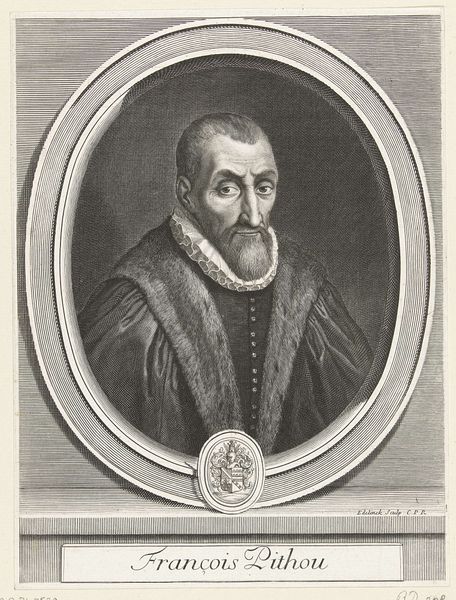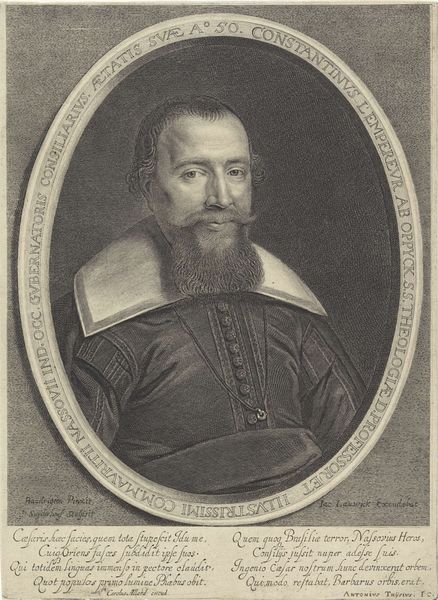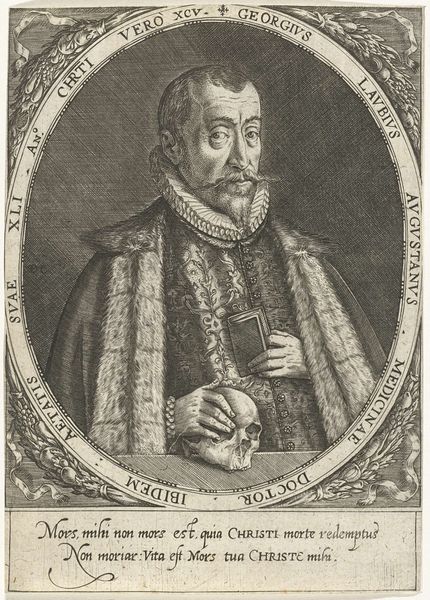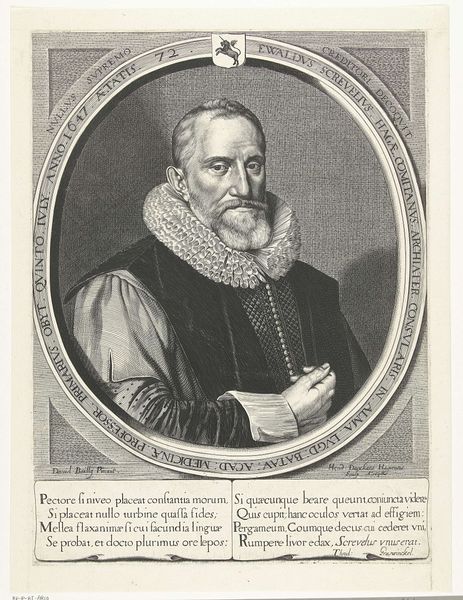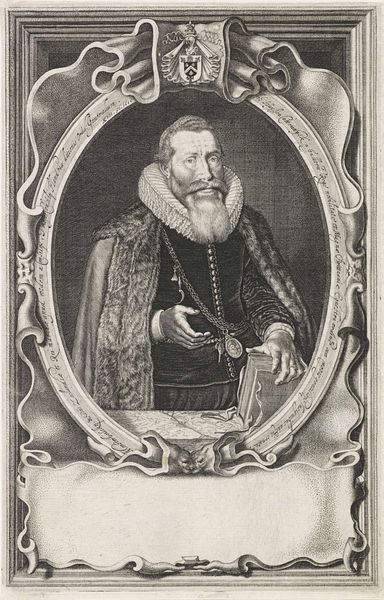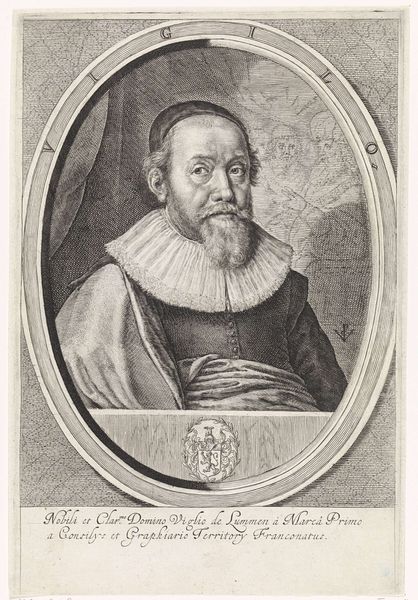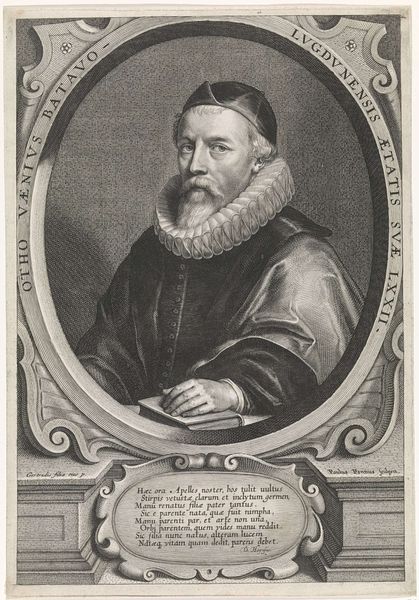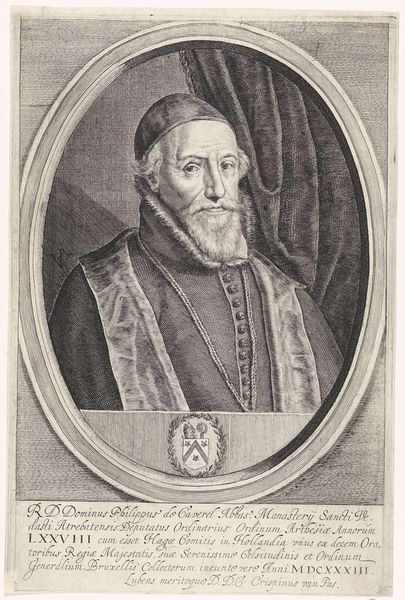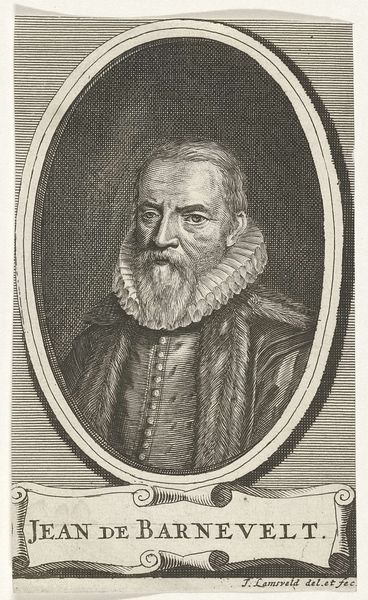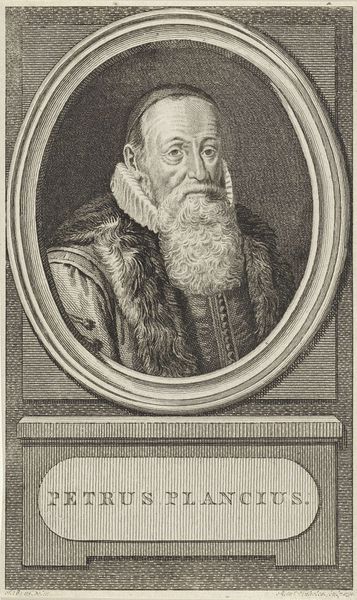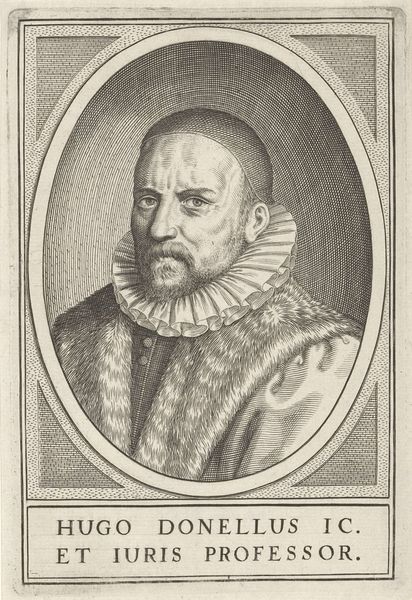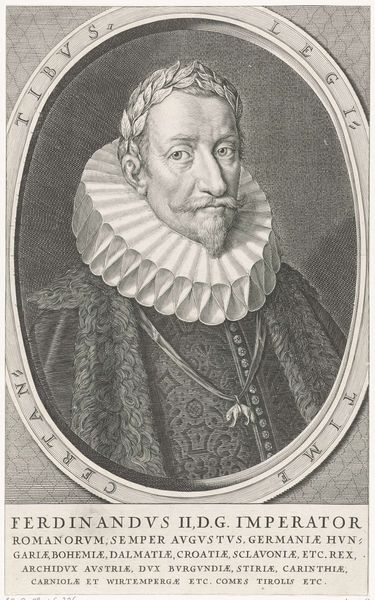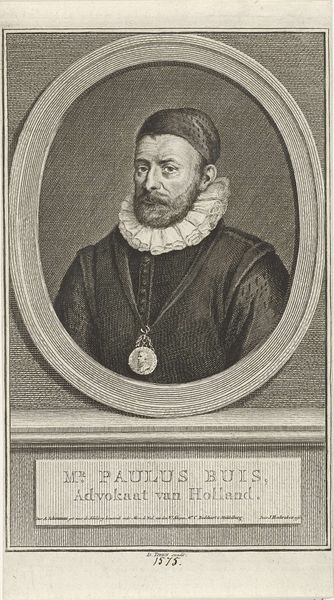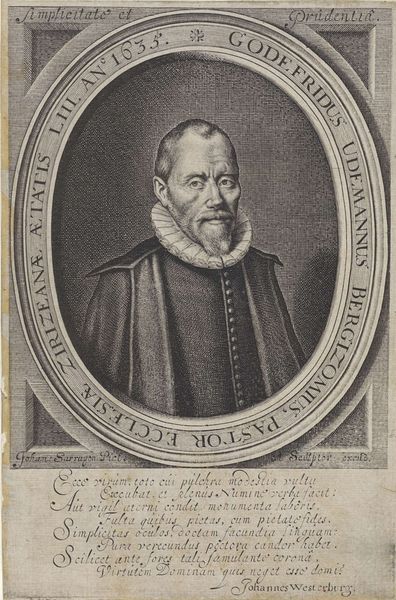
print, engraving
#
portrait
#
baroque
#
dutch-golden-age
# print
#
figuration
#
pencil drawing
#
line
#
engraving
Dimensions: height 318 mm, width 209 mm
Copyright: Rijks Museum: Open Domain
Crispijn van de Passe II made this print of Pieter Brode, probably in the Netherlands during the early to mid-17th century. It's an etching, a medium that allows for detailed line work, which here captures the sitter's likeness and social standing. The image is rich in visual codes. Brode's formal attire, including the elaborate ruff, signals his status. The inclusion of his coat of arms further emphasizes his noble lineage and position within Dutch society. As a "Pensionary" of the city of Deventer, Brode was a powerful legal official; his portrait would have served to reinforce his authority. The Dutch Republic during this period was undergoing significant social and political changes. The Dutch revolt had just ended, and a new sense of national identity was emerging, along with new urban elites such as Brode. Prints like this, widely circulated, played a key role in constructing a sense of social hierarchy. To fully understand this work, researchers might explore Dutch social history, legal archives, and the history of printmaking as a medium. By considering these resources, we can reveal the nuanced meanings embedded in this portrait.
Comments
No comments
Be the first to comment and join the conversation on the ultimate creative platform.
